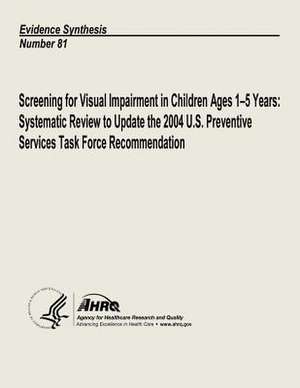Screening for Visual Impairment in Children Ages 1-5 Years
Autor U. S. Department of Heal Human Services, Agency for Healthcare Resea And Qualityen Limba Engleză Paperback
Preț: 138.55 lei
Preț vechi: 145.83 lei
-5% Nou
Puncte Express: 208
Preț estimativ în valută:
26.52€ • 28.82$ • 22.29£
26.52€ • 28.82$ • 22.29£
Carte disponibilă
Livrare economică 31 martie-14 aprilie
Preluare comenzi: 021 569.72.76
Specificații
ISBN-13: 9781484162439
ISBN-10: 1484162439
Pagini: 140
Dimensiuni: 216 x 279 x 8 mm
Greutate: 0.34 kg
Editura: CREATESPACE
ISBN-10: 1484162439
Pagini: 140
Dimensiuni: 216 x 279 x 8 mm
Greutate: 0.34 kg
Editura: CREATESPACE
